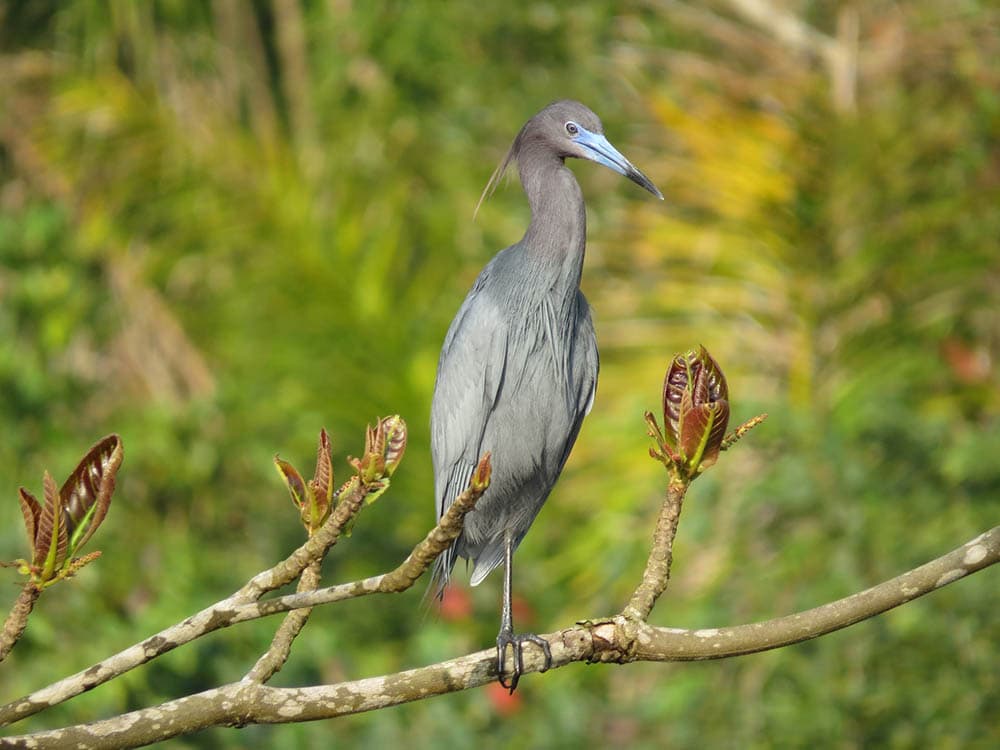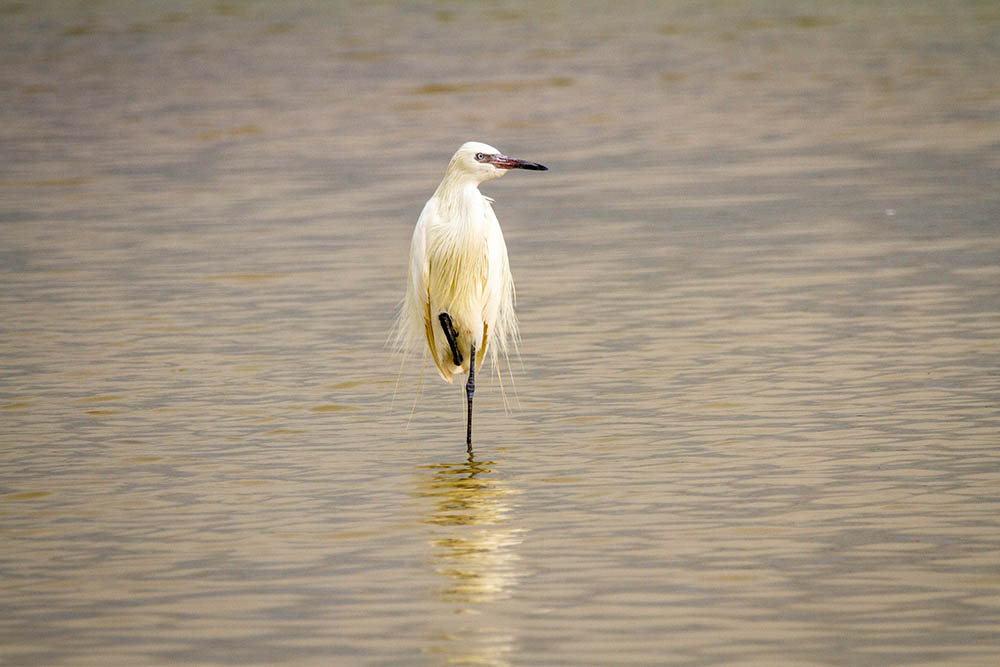Why Do Birds Stand On One Leg? The Interesting Answer!
Last Updated on

Birds in the wild are often seen standing or sleeping on one leg. This odd behavior can be observed in birds of nearly every size, shape, and color. Ducks stand on one leg, and ostriches do it too. Of course, we can’t forget about flamingos, and even hawks have been spotted standing on a single leg. So, what gives? Why do birds stand on one leg? It has to do with their anatomy.
Birds stand on one leg to keep warm. Since birds have long legs compared to their bodies, the legs have a lot of blood circulating in them. Birds’ legs are unfeathered, leaving them cold and exposed to the air. In order to keep those legs and the blood flowing inside them warm, they bring up one leg into their warm feathery bodies. It is an entirely natural behavior that looks quite strange to the naked eye.

Blood Circulation
When blood leaves the heart, it is nice and warm. The blood at the center of a body is warm and kept warm by the surrounding animal. When the blood is pumped away to the extremities of the body, it begins to cool. This process is particularly prominent in birds.
Birds have long legs that are unfeathered. When birds perch on things, their legs and feet are exposed to the elements and completely unprotected. If a bird lands on a steel sign in the rain, the bird’s feet are leaking their warmth into the cold, damp environment.
When the blood returns from the legs back into the center of the bird, it is cool. That means that the blood has to be warmed back to the body temperature of the bird as it travels back to the heart.
In order to mitigate this problem, birds stand on one leg. With one leg retracted, a bird will save half of its heat loss. That means that the bird will feel warmer and use less energy than if it stands on two legs. That heat retention can go a long way in certain situations.

Staying Warm Is More Efficient
The less blood that a bird has to warm, the more efficient it will function. Keeping a body warm takes a lot of energy. The more heat that is lost, the more calories the bird will need to maintain warmth. By standing on one leg, a bird doubles its heat retention efficiency, which can save twice as many calories as if it always stood on two legs.
This efficiency can be extremely beneficial in cold weather or times when a bird is struggling to find calories. All living things are happiest when they are on the path of least resistance.
The reason that birds stand on one leg is similar to why people’s eyes get worse when they wear glasses. Living things are lazy and metabolic processes will take whatever advantage they can find and run with them.
More Common In Cold Weather
Since standing on one leg is all about heat retention and body warmth, it is much more likely to see birds standing on one leg in the winter or in cold environments. You might not see hawks and crows hopping around on one leg in the summer, but you can probably spot them doing so in the winter.
Birds’ inability to maintain adequate levels of warmth is one of the reasons why birds migrate in the winter. They want to avoid being subject to that extremely cold air that occurs during the winter months, especially at northern latitudes. It turns out that many bird behaviors are due to heat and body temperature.
Heat management is also why it is more common to see water birds standing on one leg than woodland birds. The ocean is cold. Rivers are cold. Air over and around water is usually colder than the air around the land. That constant cooling effect means birds lose more heat around the water than they do in dry areas. Water-loving birds like ducks, egrets, ospreys, and seagulls are often seen standing on one leg. These birds’ legs are usually in the water, which is a sure way to lose heat. For that reason, when these birds are standing on land, they are usually on one leg to try and get warm again. If you want to see a bird standing on one leg looking for birds by bodies of water is a good bet.


In Conclusion
Birds do not stand on one leg because it is easier to sleep but because it helps to keep them warm. Birds’ legs are long and unfeathered, leading to them getting cold very easily. Cold birds use more energy to keep warm, and that means they have to eat more to survive. Standing on one leg makes birds much more efficient and able to survive in colder weather and on less food than if they always stood on two legs. Nature sure is wild.
Featured Image Credit: Jaime Dantas, Unsplash
About the Author Robert Sparks
Robert’s obsession with all things optical started early in life, when his optician father would bring home prototypes for Robert to play with. Nowadays, Robert is dedicated to helping others find the right optics for their needs. His hobbies include astronomy, astrophysics, and model building. Originally from Newark, NJ, he resides in Santa Fe, New Mexico, where the nighttime skies are filled with glittering stars.
Related Articles:
What Is the Best Binocular Magnification for Hunting? Optical Features Explained
10 Types of Hummingbirds in Arkansas (With Pictures)
8 Types of Hummingbirds in Nebraska (With Pictures)
5 Types of Hummingbirds in Idaho (With Pictures)
3 Types of Hummingbirds in Mississippi (With Pictures)
8 Types of Hummingbirds in Kansas (With Pictures)
5 Types of Hummingbirds in West Virginia (With Pictures)
5 Types of Hummingbirds in Ohio (With Pictures)
